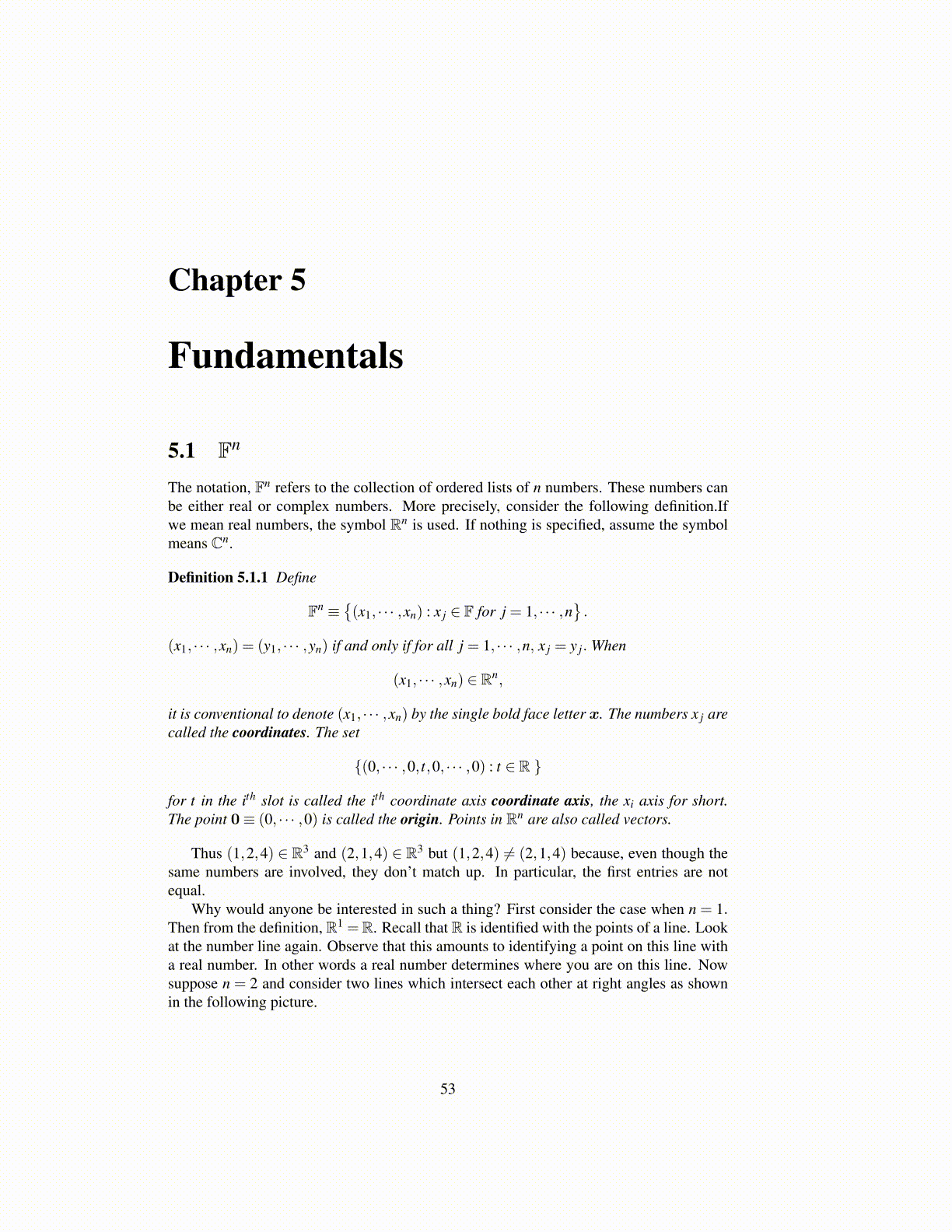
Chapter 5
Fundamentals
5.1 Fn
The notation, Fn refers to the collection of ordered lists of n numbers. These numbers canbe either real or complex numbers. More precisely, consider the following definition.Ifwe mean real numbers, the symbol Rn is used. If nothing is specified, assume the symbolmeans Cn.
Definition 5.1.1 Define
Fn ≡{(x1, · · · ,xn) : x j ∈ F for j = 1, · · · ,n
}.
(x1, · · · ,xn) = (y1, · · · ,yn) if and only if for all j = 1, · · · ,n, x j = y j. When
(x1, · · · ,xn) ∈ Rn,
it is conventional to denote (x1, · · · ,xn) by the single bold face letter x. The numbers x j arecalled the coordinates. The set
{(0, · · · ,0, t,0, · · · ,0) : t ∈ R }
for t in the ith slot is called the ith coordinate axis coordinate axis, the xi axis for short.The point 0≡ (0, · · · ,0) is called the origin. Points in Rn are also called vectors.
Thus (1,2,4) ∈ R3 and (2,1,4) ∈ R3 but (1,2,4) ̸= (2,1,4) because, even though thesame numbers are involved, they don’t match up. In particular, the first entries are notequal.
Why would anyone be interested in such a thing? First consider the case when n = 1.Then from the definition, R1 =R. Recall that R is identified with the points of a line. Lookat the number line again. Observe that this amounts to identifying a point on this line witha real number. In other words a real number determines where you are on this line. Nowsuppose n = 2 and consider two lines which intersect each other at right angles as shownin the following picture.
53